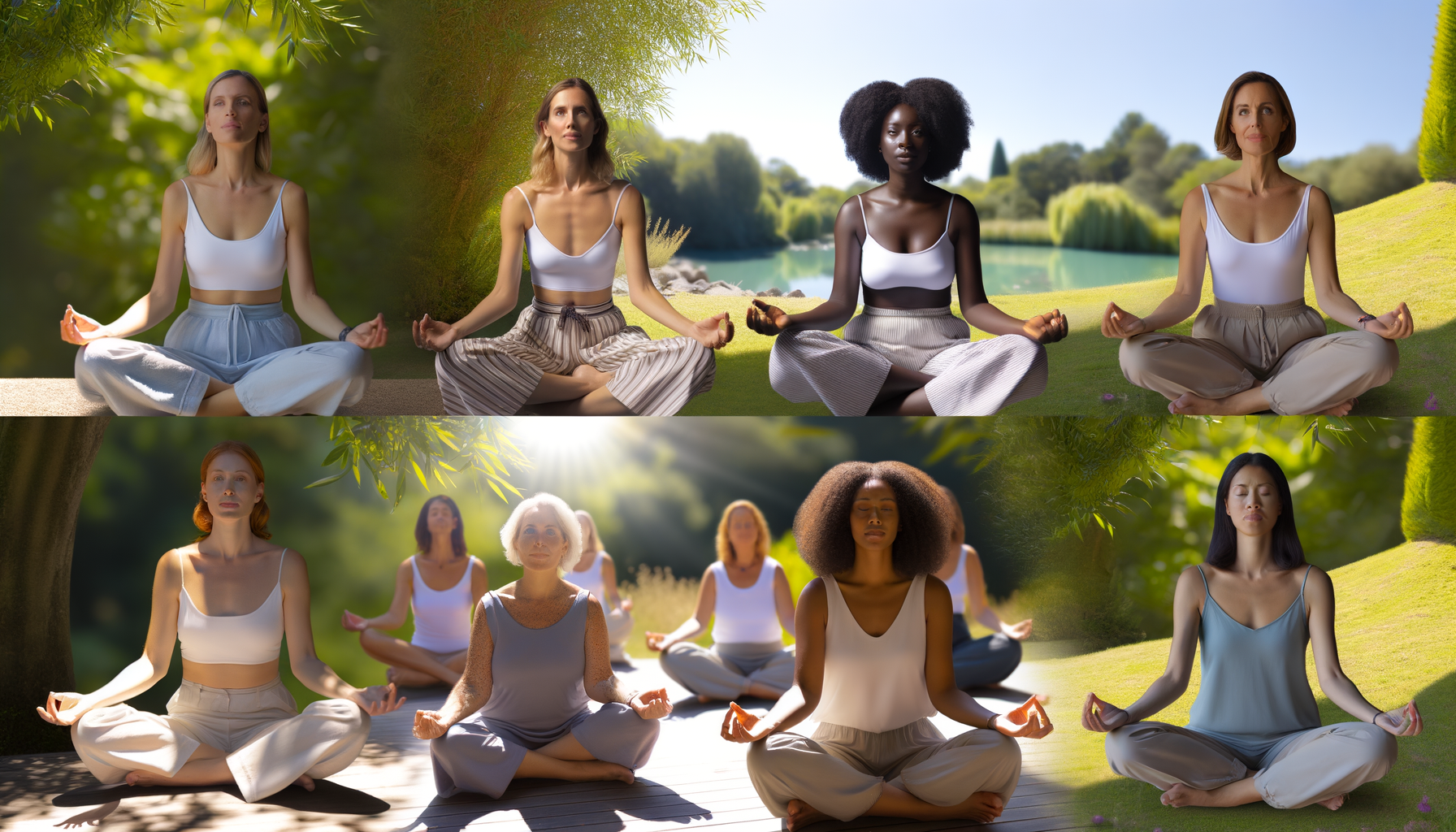
Introduction to Soulful Suppers
The Connection Between Food, Spirituality, and Mental Clarity
Food is more than just sustenance; it is a conduit for spiritual nourishment and a catalyst for mental clarity. The act of eating engages all the senses, grounding us in the present moment and allowing us to connect with a deeper part of ourselves. This connection is not merely metaphorical; scientific studies have shown that certain foods can enhance cognitive function and emotional well-being, influencing our spiritual and mental states.
Understanding the Concept of Soulful Suppers
Soulful Suppers are meals prepared with the intention of nurturing not only the body but also the soul and mind. These are meals that are crafted with awareness, incorporating ingredients that promote spiritual growth and mental clarity. The concept transcends dietary preferences and cultural backgrounds, focusing on the universal human experience of finding joy, connection, and balance through the act of eating.
The Importance of Intention in Meal Preparation
Intention is the secret ingredient in any Soulful Supper. When we prepare food with specific intentions, such as gratitude, love, or healing, we infuse our meals with those energies. This mindful approach to cooking can transform the dining experience, turning a routine act into a sacred ritual that nourishes more than just the physical body.
Overview of the Article
In this article, we will explore the philosophy of mindful eating and its benefits for spiritual and mental well-being. We will delve into the nutritional foundations that support cognitive function and spiritual connectivity, and learn how to balance our chakras through diet. The art of crafting soulful recipes will be discussed, along with practical tips for selecting ingredients with high vibrational energy and adapting recipes to personal dietary needs. Additionally, we will consider how to create a serene dining environment and integrate soulful suppers into daily life, even with a busy schedule or limited budget. Finally, we will conclude with encouragement for personal exploration and growth in the journey of soulful eating.
The Philosophy of Mindful Eating
Principles of Mindful Eating
Mindful eating is a practice that involves fully focusing on the experience of eating and drinking, both inside and outside the body. It encompasses several principles that guide individuals towards a more conscious approach to food. Firstly, it encourages eating slowly and without distraction, allowing one to fully engage with the act of eating. Secondly, it involves recognizing the cues for hunger and satiety to regulate intake naturally. Thirdly, it promotes the appreciation of food, from its origins to its preparation and presentation. Lastly, mindful eating is about acknowledging the effects food has on one’s feelings and body without judgment.
How Mindful Eating Supports Spiritual Growth
Eating mindfully can be a spiritual practice as it brings one into the present moment, fostering a deeper connection with the self and the world around. It allows individuals to express gratitude for the nourishment provided, creating a sense of harmony and respect for all living things. This practice can lead to heightened awareness and a more profound sense of peace, which are essential components of spiritual growth.
The Role of Mindfulness in Achieving Mental Clarity
Mindfulness in eating can significantly contribute to mental clarity by reducing the ‘noise’ that often accompanies mindless eating habits. By focusing on the act of eating, one can clear the mind of clutter, allowing for better concentration and decision-making. This clarity of mind can extend beyond mealtimes, influencing other areas of life with a calm and centered approach.
Practical Tips for Mindful Eating Practices
- Start Small: Begin by eating one meal a day or week in a slower, more attentive manner.
- Create a Distraction-Free Zone: Turn off the TV and put away electronic devices to minimize distractions.
- Engage Your Senses: Notice the colors, textures, scents, and flavors of your food to enhance the experience.
- Chew Thoroughly: Take time to chew your food, which aids digestion and prolongs the enjoyment of the meal.
- Pause: Put your utensils down between bites to savor the moment and assess your hunger levels.
- Reflect: Consider the journey your food has taken from source to plate, and appreciate the effort involved.
- Express Gratitude: Take a moment before eating to express thanks for the nourishment you are about to receive.
By incorporating these practices into your daily routine, you can transform mealtime into a soulful experience that nourishes not just the body, but also the mind and spirit.
Nutritional Foundations for Spiritual and Mental Well-being
Essential Nutrients for Cognitive Function
Our cognitive function is deeply intertwined with the nutrients we consume. Essential fatty acids, such as omega-3s found in fish, flaxseeds, and walnuts, are vital for maintaining the structure and function of brain cells. Antioxidants, like vitamins C and E, combat oxidative stress that can damage brain cells, and are abundant in fruits and vegetables. B vitamins, particularly B12, B6, and folate, are crucial for nerve function and the synthesis of neurotransmitters, and can be sourced from whole grains, legumes, and leafy greens. Amino acids, the building blocks of proteins, influence neurotransmitter production and are found in a variety of protein-rich foods. Ensuring a diet rich in these nutrients can support cognitive clarity and overall brain health.
Foods That Enhance Spiritual Connectivity
Some foods are believed to have a higher vibrational energy that can enhance spiritual connectivity. Fresh, organic fruits and vegetables, raw nuts and seeds, and legumes are thought to resonate with the body’s natural frequency, promoting inner harmony and spiritual awareness. Hydration is also key, with pure water being the most beneficial for maintaining the flow of energy through the body. Additionally, herbs like sage, cilantro, and holy basil are often used in spiritual practices for their purifying properties.
Balancing the Chakras Through Diet
The chakras are energy centers within the body that correspond to different aspects of our physical and emotional well-being. A balanced diet can help align and energize these chakras. For example, root vegetables and protein-rich foods can ground the root chakra, while citrus fruits and fibrous vegetables can stimulate the solar plexus chakra. The heart chakra may benefit from green leafy vegetables and green tea, while the throat chakra can be supported with soothing liquids and fruits like apples and peaches. Intuitive eating, with a focus on foods that correspond to each chakra’s color and function, can contribute to a balanced energy system.
Creating a Harmonious Meal Plan
Designing a meal plan that supports spiritual growth and mental clarity involves more than just selecting the right foods. It requires a holistic approach that considers the timing, combination, and preparation of meals. Begin by incorporating a variety of nutrient-dense foods that support cognitive function and spiritual connectivity. Plan meals that include a balance of colors and textures to stimulate the senses and align with the body’s energy centers. Mindful preparation and eating practices can enhance the spiritual experience of dining, turning each meal into an opportunity for nourishment and reflection. Lastly, listen to your body’s signals and adjust your meal plan to suit your unique needs, ensuring that your diet remains a dynamic and supportive element of your spiritual journey.
The Art of Crafting Soulful Recipes
Selecting Ingredients with High Vibrational Energy
Creating soulful suppers begins with the selection of ingredients that carry high vibrational energy. These are foods that are believed to resonate with the positive energy of the earth and the universe, contributing to our spiritual and mental well-being. Fresh, organic fruits and vegetables, whole grains, nuts, seeds, and legumes are not only nutrient-dense but also imbued with life force that can elevate our meals from mere sustenance to a source of spiritual nourishment. When choosing ingredients, consider their source, the method of cultivation, and the energy they carry. Foods grown with love, care, and respect tend to have higher vibrational qualities.
Incorporating Elements of Traditional Wisdom
Traditional wisdom from various cultures offers a treasure trove of knowledge on how food can support our spiritual journey. Ayurveda, for instance, teaches us about the qualities of foods and how they affect our mind, body, and spirit. Similarly, Traditional Chinese Medicine (TCM) emphasizes the balance of yin and yang in our diet. By incorporating these ancient practices into our meal preparation, we can create dishes that not only nourish our bodies but also align with our spiritual and mental goals.
Recipe Ideas for Soulful Suppers
- Quinoa and Roasted Vegetable Bowl: Combine cooked quinoa with a selection of roasted vegetables like zucchini, bell peppers, and sweet potatoes. Drizzle with a lemon-tahini dressing to add a creamy texture and a boost of flavor.
- Hearty Lentil Stew: Simmer lentils with tomatoes, carrots, celery, and herbs like rosemary and thyme. This comforting stew is grounding and perfect for nurturing the soul on cooler evenings.
- Stuffed Bell Peppers: Fill bell peppers with a mixture of brown rice, black beans, corn, and spices. Top with avocado slices for a heart-healthy addition that also promotes mental clarity.
Adapting Recipes for Personal Dietary Needs
Each individual’s path to spiritual growth and mental clarity is unique, and so are their dietary needs. Whether you are vegan, gluten-free, or have specific food sensitivities, soulful recipes can be adapted to meet your requirements. Use plant-based alternatives for dairy, gluten-free grains instead of wheat, and natural sweeteners like dates or honey in place of refined sugars. The key is to listen to your body and make adjustments that align with your physical and spiritual well-being.
By mindfully selecting ingredients, embracing traditional wisdom, experimenting with soul-nourishing recipes, and personalizing dishes to suit dietary needs, we can transform our meals into a profound experience that feeds not just our bodies but also our souls.
Setting the Ambiance for Soulful Suppers
Creating a Serene Dining Environment
The atmosphere in which we dine can significantly influence our experience of a meal. To foster a sense of tranquility and presence, begin by decluttering the dining space. A clean, uncluttered table allows the mind to settle and the spirit to open. Consider the lighting—soft, warm lights or candles can create a calming effect, inviting diners to slow down and savor each bite. Natural elements like plants or flowers can add a touch of serenity, connecting us to the earth as we eat.
The Use of Aromatherapy and Color Therapy in Dining
Aromatherapy can enhance the dining experience by engaging our sense of smell, a direct pathway to the brain’s emotional center. Diffusing essential oils like lavender for relaxation or citrus for an uplifting effect can complement the meal’s flavors and elevate the overall mood. Similarly, color therapy can influence our energy and emotions. Soft blues and greens promote calmness, while warm yellows and oranges can stimulate conversation and joy. Integrating these colors through tablecloths, napkins, or dinnerware can subtly enhance the spiritual and mental benefits of a meal.
The Importance of Presenting and Plating
The visual presentation of food is not merely about aesthetics; it’s a form of respect for the ingredients and the eater. Thoughtful plating can turn a meal into a meditative practice, encouraging mindfulness as we take in the colors, textures, and arrangement of our food. By presenting dishes beautifully, we honor the nourishment they provide and prepare our minds to receive their benefits fully.
Incorporating Rituals and Blessings
Introducing rituals or blessings before eating can deepen the connection between food and spirit. This might involve a moment of silence, expressing gratitude for the meal, or a short blessing that resonates with your beliefs. Such practices can center the mind, making us more receptive to the spiritual sustenance food offers. They remind us that each meal is not just sustenance but a sacred communion with the ingredients, the earth, and our inner selves.
By mindfully setting the ambiance for soulful suppers, we create a sanctuary for spiritual growth and mental clarity. Each element, from the scent in the air to the color of our plates, contributes to a harmonious dining experience that nourishes more than just our bodies—it nourishes our souls.
Integrating Soulful Suppers into Daily Life
Overcoming Challenges in Maintaining a Soulful Diet
Maintaining a soulful diet can be challenging, especially when faced with the fast pace of modern life and the abundance of convenient but less nourishing food options. To stay committed to a diet that supports spiritual growth and mental clarity, it’s essential to recognize common obstacles such as time constraints, temptation from less healthy foods, and the occasional lack of motivation. Overcoming these challenges begins with a strong intention and a plan that aligns with your spiritual and mental goals. It may involve preparing meals in advance, choosing whole and unprocessed foods, and being mindful of the body’s true needs versus fleeting cravings.
Strategies for Busy Schedules and Limited Budgets
- Meal Prepping: Dedicate a few hours each week to prepare and store multiple meals that align with your soulful eating principles.
- Seasonal Shopping: Purchase fruits and vegetables that are in season to get better prices and higher nutritional value.
- Bulk Buying: Invest in bulk purchases of staple items like grains, legumes, and nuts to save money in the long run.
- Herb Gardening: Grow your own herbs to infuse your meals with fresh flavors and energetic properties without the added cost.
The Role of Community and Shared Meals
Sharing meals with others can be a powerful way to reinforce the practice of soulful eating. Community gatherings centered around food provide an opportunity to connect, share experiences, and support each other’s spiritual and mental well-being. Whether it’s a family dinner, a potluck with friends, or a community event, shared meals can help to create a collective energy that enhances the nourishment received from the food. Additionally, these gatherings can serve as a platform for exchanging recipes, wisdom, and encouragement to maintain a soulful diet amidst life’s demands.
Continual Learning and Adaptation
As with any meaningful practice, integrating soulful suppers into daily life is a journey that involves continual learning and adaptation. Embrace the process of discovering new ingredients, cooking methods, and traditions that resonate with your spiritual and mental objectives. Stay open to experimenting with different cuisines and flavors that align with your soulful eating philosophy. Attend workshops, cooking classes, or join online communities that focus on mindful and spiritual eating to expand your knowledge and keep your practice fresh and engaging. Remember, the path to spiritual growth and mental clarity through food is personal and ever-evolving, reflecting the dynamic nature of our lives and our souls.
Conclusion: Embracing the Journey of Soulful Eating
Summarizing the Key Benefits of Soulful Suppers
The journey of soulful eating is one that intertwines the nourishment of the body with the enrichment of the spirit. Soulful suppers are not merely meals; they are experiences that foster spiritual growth and mental clarity. The key benefits of such meals include enhanced mindfulness, a deeper connection to food sources, and a strengthened sense of community. By eating with intention and gratitude, we open ourselves to the profound lessons that food can teach us about life, sustainability, and interconnectedness.
Encouragement for Personal Exploration and Growth
As we continue to craft meals that feed our souls as well as our bodies, we encourage personal exploration and growth. This exploration can lead to a greater understanding of our own dietary needs, the discovery of new flavors and cuisines, and the development of cooking skills that honor both the ingredients and the eater. Growth in this context is not just about expanding our palates, but also about deepening our relationship with food and its role in our lives.
Invitation to Further Discovery and Practice
The practice of soulful eating is an ongoing journey, one that invites further discovery and practice. It encourages us to seek out new ways to connect with our food, whether through gardening, foraging, or supporting local farmers. As we learn and grow, we also become advocates for a food system that values nourishment of the whole person—body, mind, and spirit.
Parting Thoughts on Nourishment Beyond the Plate
In parting, it is essential to remember that nourishment extends beyond the plate. Soulful suppers are a gateway to a more harmonious and mindful way of living. They remind us that every bite is an opportunity to nourish not just ourselves, but also the world around us. As we embrace the journey of soulful eating, we contribute to a culture that values the sacredness of food and the joy of sharing it with others.








